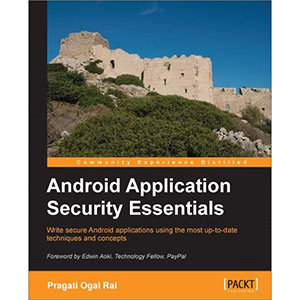Open Source Identity Management Patterns and Practices Using OpenAM 10.x

OpenAM is a web-based open source application that provides authentication, authorization, entitlement and federation services. OpenAM provides core identity services to simplify the implementation of transparent single sign-on (SSO) as a security component in a network infrastructure. It also provides the foundation for integrating diverse web applications that might typically operate against a disparate set of identity repositories and that are hosted on a variety of platforms such as web application servers.
Open Source Identity Management Patterns and Practices Using OpenAM 10.x is a condensed, practical guide on installing OpenAM to protect your web applications. This book will teach you how to integrate to different identity sources such as Active Directory or Facebook using two-factor authentications.
Open Source Identity Management Patterns and Practices Using OpenAM 10.x looks at Identity Management and how to implement it using OpenAM 10.x. It specifically focuses on providing authentication to your web application using either a local identity source or a cloud-based identity source, so you don’t have to worry about authentication in your application.
You will learn how to install OpenAM, and then how to install policy agents against your web and application servers to do authentication. In addition, we’ll focus on integrating to applications directly using SAML, either through the use of a small preconfigured application, or through a third-party SAML library. Finally, we’ll focus on integrating to cloud identity providers using OAuth 2.0 and utilizing two-factor authentication.
If you want a scalable robust identity management infrastructure, Open Source Identity Management Principles and Patterns Using OpenAM 10.x will get you up and running in the least amount of time possible.
What you will learn from this book
- Understand Identity Management principles
- Install OpenAM 10.x
- Install policy agents against Apache Web Server and Tomcat Servlet Container
- Implement cross-domain authentication
- Implement distributed authentication using DMZs
- Deploy Java application authentication quickly using Fedlets
- Understand the federation of applications to OpenAM using SAML
- Integrate to cloud-based identity providers using OAuth 2.0
- Configure two-factor authentication
- Implement entitlements with REST and XACML
Approach
This is a Packt Mini in a tutorial format that provides multiple examples on Identity Management using OpenAM 10.x.
Who this book is written for
Open Source Identity Management Patterns and Practices Using OpenAM 10.x is great for developers and architects who are new to Identity Management, and who want a brief overview of what’s possible and how to quickly implement a prototype. It’s assumed that you’ve had experience with web applications and some knowledge of Apache and Tomcat.
Book Details
- Paperback: 116 pages
- Publisher: Packt Publishing (August 2013)
- Language: English
- ISBN-10: 1782166823
- ISBN-13: 978-1782166825














